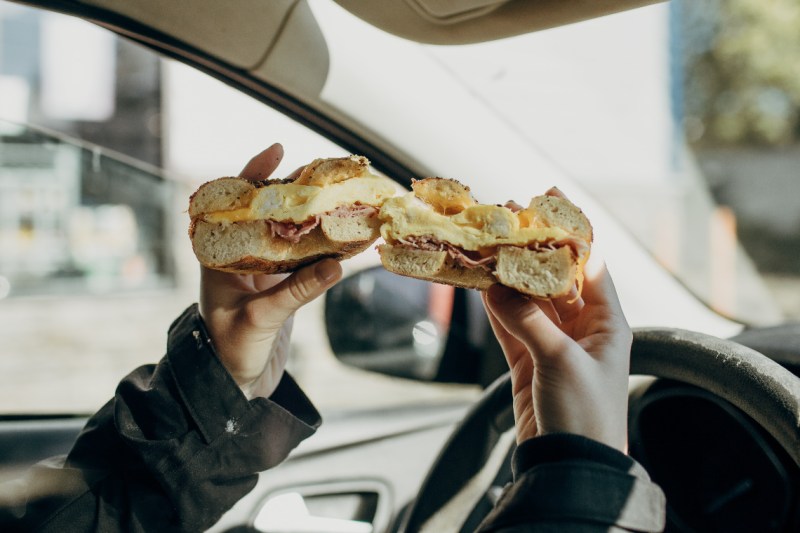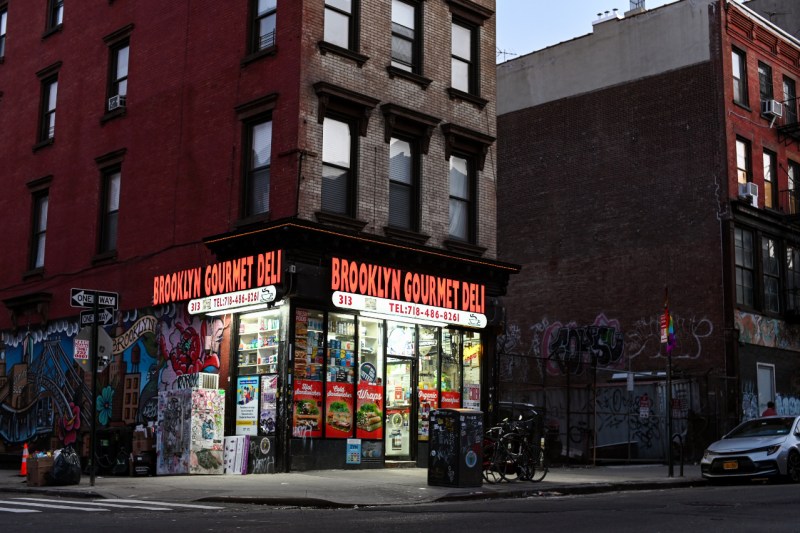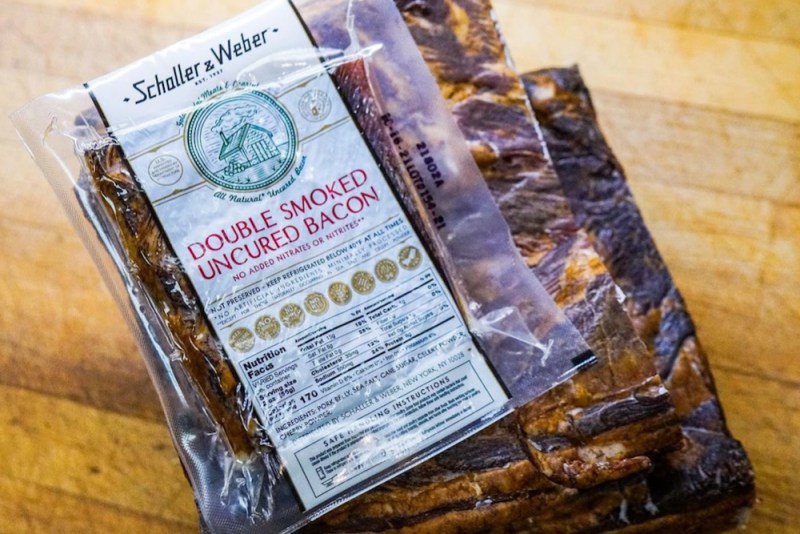For many New Yorkers, there’s one undisputed breakfast champion — the bacon, egg, and cheese sandwich. Abbreviated as a BEC, these hot sandwiches are pervasive, affordable, and handheld, making this the perfect sandwich for busy New Yorkers on the go.

Related Guides
A New York Staple

There are two main places to get a bacon, egg, and cheese in New York — the ubiquitous local bodega (corner store) or a breakfast cart. Most New York bodegas have delis featuring an array of food ranging from wings to smoothies to fresh breakfast sandwiches. Convenience and speed are important at the bodega so expect fast service and sandwiches wrapped in wax paper and foil. The best part about getting a bacon, egg, and cheese at a bodega is the customization. Feel free to request condiments like hot sauce or different meats (turkey bacon). As a bonus, you can also grab a coffee or any cold drink from the bodega’s coolers.
The second option is a breakfast cart. These small food carts are usually located near subway stations and other areas with heavy pedestrian traffic. Pro-tip — the breakfast carts operated by Mexican cooks will sometimes have whole roasted jalapeños. Feel free to request one of these fiery peppers in your breakfast sandwich for a spicy kick. Besides breakfast sandwiches, these little carts also have hot beverages and breakfast pastries like muffins and donuts.
A typical BEC will feature American cheese, pork bacon, and thin, fried eggs between a sandwich roll. From there, customers can choose different variations like swiss cheese or bread (bagels are another option). This ability to customize the sandwich is the best element of the BEC. But remember, whatever the choice, this sandwich is best eaten hot and fast, preferably with a cup of strong coffee.
Read more: New York City Travel Guide
Toasty Walnut and Basil Egg Sammy

(By Nick Korbee, owner of First Mile Kitchen, partner at Egg Shop NYC and Chef James McBride of First Mile Kitchen.)
This upgraded version of bacon, egg, and cheese uses Double Smoked Uncured Bacon from Schaller & Weber, a classic German butcher in Manhattan’s Upper East Side. The bacon at Schaller & Weber is twice smoked and sold in full bricks (not pre-sliced). While this bacon isn’t raw, it has been brought up to temperature during the smoking process. Unlike typical bacon, this process at Schaller & Weber ensures minimal fat shrinkage during cooking. “It’s a bacon for people who are serious about cooking,” said Jesse Denes, Vice President at Schaller & Weber.
For the Sandwich:
Ingredients:
- 1 whole croissant (halved & toasted), ideally sourced from your local bakery
- 1 tablespoon whipped montchevre
- 2 slices heirloom tomato
- 1 ounce field greens
- 1 tablespoon Toasted Walnut and Basil Pesto
- 2 whole eggs
- 1 tablespoon whole milk
- 1 tablespoon butter
- 2 slices of seared Schaller & Weber Double Smoked Uncured Bacon
Method:
- In a small bowl using a fork, beat the eggs and whole milk together until well blended.
- Heat a small nonstick skillet over a medium-low flame, toss in butter, making sure that the melted butter coats the surface of the skillet.
- Pour in eggs, pause for a few seconds to let them cook slightly (gentle heat is essential for making a well-textured, fluffy scrambled egg).
- Gently move a rubber spatula across the bottom of the skillet to allow the eggs to constantly cook without browning. Cook eggs until no liquid remains.
- Spread montchevre on bottom slice of croissant, place eggs on bottom, then bacon, field greens and heirloom tomato. Drizzle pesto over everything. Top with last slice of croissant. Enjoy!
For Toasted Walnut and Basil Pesto:
Ingredients:
- .5 cup extra virgin olive oil
- 2.5 cups basil leaves (enough to turn the sauce a vibrant shade of green)
- 2-3 cloves of garlic
- .5 cup toasted walnuts
- 1/3 cup aged white cheddar cheese (grated)
- .5 teaspoon lemon zest
- .5 teaspoon sea salt
Method:
- Using a small skillet over medium heat, toast the walnuts for 2 minutes. Constantly toss the nuts to avoid burning. Set aside and let cool to room temperature.
- Combine all ingredients excluding olive oil into a blender. Pulse a few times until all ingredients are well chopped. Slowly drizzle in olive oil while the machine is blending until you get a fairly smooth, vibrant walnut basil pesto. Taste for seasoning and adjust if necessary.



